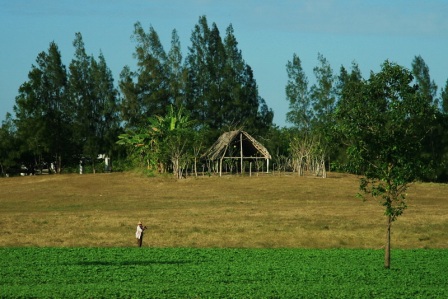Better Off Forgotten: On Cuba’s Peasantry
Erasmo Calzadilla

HAVANA TIMES — I am not familiar with the works of Graziella Pogolotti. I know she is held in high esteem and has been widely praised for her writings.
I have read a few reflections by this author which do not exactly measure up to her renown. The one I will focus on now was published under the title of “El campesino, ese personaje ausente” (The Peasant: The Forgotten Character).
In this essay, Pogolotti argues that the image of Cuba’s peasantry has gradually faded away or been distorted over time, claiming that peasants “(…) disappeared from the country’s literature and, for a very long time, Cuba’s television relied on misleading stereotypes to portray them.”
Up to this point, I agree with her. From this point on, however, it is she who begins to offer us an extremely impoverished and caricaturized image of Cuba’s peasantry.
Pogolotti portrays the Cuban countryside before 1959 as a place of malnourished children, homeless families, sickly and prematurely wrinkled faces and hollow shells of people who knew nothing of places across the sea or electricity.
She sets the perfect stage for a comic-strip plot in which the revolution comes along like a heroine, dishing out happiness, health, work, culture and trips abroad.
I am sure that, to a certain extent, this was actually the case, but I am also convinced that this is only one of the sides of a complex and multifaceted process.
It is hard to picture Pogolotti’s suffering, sickly and uneducated masses as the bearers of a rich material and spiritual culture.
In its early years, the Cuban revolution drew from the wellspring of peasant values, and it is hard to imagine that such a cultural wellspring could gush forth in the midst of so many “hopeless people” and “homeless families.” It seems as though that palette is missing some colors, and perhaps more than a few.
It’s true that the Cuban revolution focused much of its efforts on the countryside, but it is also true that, in exchange for this, it demanded that the countryside become revolutionary.
To achieve this, it combatted the popular imaginary and spiritual traditions, indoctrinated the young with an ideology totally alien to their surroundings, deliberately dismantled communities and family structures, strangled the economy with absurd bureaucratic provisions and implemented a long list of other destructive measures.
There are many reasons behind the catastrophe of the Cuban countryside, but Pogolotti only mentions one: the generous revolution gave the children of the peasantry the opportunity to have an education in the city and these children did not want to return to the sticks.
Guess what caused the low productivity of those employed by the revolutionary State?
Pogolotti gives us two reasons: that agricultural workers were wary of the prosperity of the independent farmers, and administrators at State collectives didn’t have the qualifications needed to manage such large expanses of land. My word!
If this is the way we’re going to rescue the image of Cuba’s peasantry, then, I think it’s best they remain forgotten.
